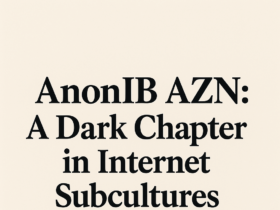Goads on NYT: An In-depth SEO Analysis

The New York Times (NYT) is one of the most influential newspapers globally, known for its rigorous journalism and in-depth reporting. Recently, the term “Goads on NYT” has gained attention. This article aims to delve into this phenomenon, exploring its origins, implications, and SEO strategies to leverage this keyword for maximum online visibility.
Introduction to Goads on NYT
“Goads on NYT” refers to critical or provocative commentary directed at the New York Times. These goads can come from various sources, including public figures, rival media outlets, or readers. The motivations behind these goads often include holding the NYT accountable, challenging its editorial decisions, or sparking public debate.
The Rise of Goads on NYT
The New York Times has always been a lightning rod for criticism due to its prominence. However, in the digital age, the frequency and intensity of goads have increased. Social media platforms amplify these critiques, making them more visible and impactful. Prominent examples include political figures questioning the NYT’s objectivity or competitors criticizing its reporting methods.
SEO Strategies for Goads on NYT
- Keyword Research:
- Use tools like Google Keyword Planner, Ahrefs, or SEMrush to identify related keywords.
- Focus on long-tail keywords such as “NYT criticism,” “New York Times goads,” and “NYT accountability.”
- Content Creation:
- Develop engaging and informative content around the keyword “Goads on NYT.”
- Create articles, blog posts, and opinion pieces that analyze specific instances of goads.
- Ensure content is well-researched and provides value to readers.
- On-Page SEO:
- Optimize titles and meta descriptions to include the keyword.
- Use headers (H1, H2, H3) effectively to structure content and improve readability.
- Incorporate the keyword naturally throughout the content, avoiding keyword stuffing.
- Backlink Strategy:
- Reach out to authoritative websites and blogs for backlinks.
- Guest post on related sites to build credibility and drive traffic.
- Use internal linking to connect related content on your website.
- Social Media Promotion:
- Share content on platforms like Twitter, Facebook, and LinkedIn.
- Engage with users by responding to comments and participating in discussions.
- Use relevant hashtags to increase reach and visibility.
- Technical SEO:
- Ensure your website is mobile-friendly and loads quickly.
- Use a clean and easy-to-navigate site structure.
- Implement SSL certificates for security.
Case Studies of Notable Goads on NYT
- Political Criticism:
- Analyze instances where political figures have criticized the NYT.
- Discuss the impact of these goads on public perception and the newspaper’s credibility.
- Rival Media Commentary:
- Examine how rival media outlets have goaded the NYT.
- Explore the motivations behind these critiques and their effect on media competition.
- Reader Feedback:
- Highlight reader responses and their role in shaping the NYT’s editorial policies.
- Discuss how the NYT addresses constructive criticism from its readership.
The Impact of Goads on NYT
Goads can have both positive and negative effects on the New York Times. On the one hand, they can drive improvement and accountability. On the other hand, excessive or unfounded goads can damage the newspaper’s reputation and trustworthiness. It is crucial for the NYT to navigate these goads carefully, balancing transparency with editorial integrity.
Conclusion
The phenomenon of “Goads on NYT” reflects the dynamic relationship between the New York Times and its critics. By understanding this relationship and implementing effective SEO strategies, content creators can leverage this keyword to enhance their online presence and engage with a broader audience. As the media landscape continues to evolve, staying informed and adaptable will be key to maintaining relevance and authority.
FAQs
- What are goads on NYT?
- Goads on NYT refer to critical or provocative commentary directed at the New York Times.
- Why is the NYT often criticized?
- Due to its prominence, the NYT is frequently scrutinized for its editorial decisions and reporting methods.
- How can content creators leverage the keyword “Goads on NYT”?
- By creating informative and engaging content, optimizing for SEO, and promoting through social media and backlinks.
- What are some notable examples of goads on NYT?
- Political criticism, rival media commentary, and reader feedback are common examples.
- What impact do goads have on the NYT?
- Goads can drive accountability and improvement but also pose risks to the newspaper’s reputation if excessive or unfounded.
By understanding and addressing the nuances of “Goads on NYT,” content creators can effectively engage with this topic, driving traffic and enhancing their online presence.















Leave a Reply